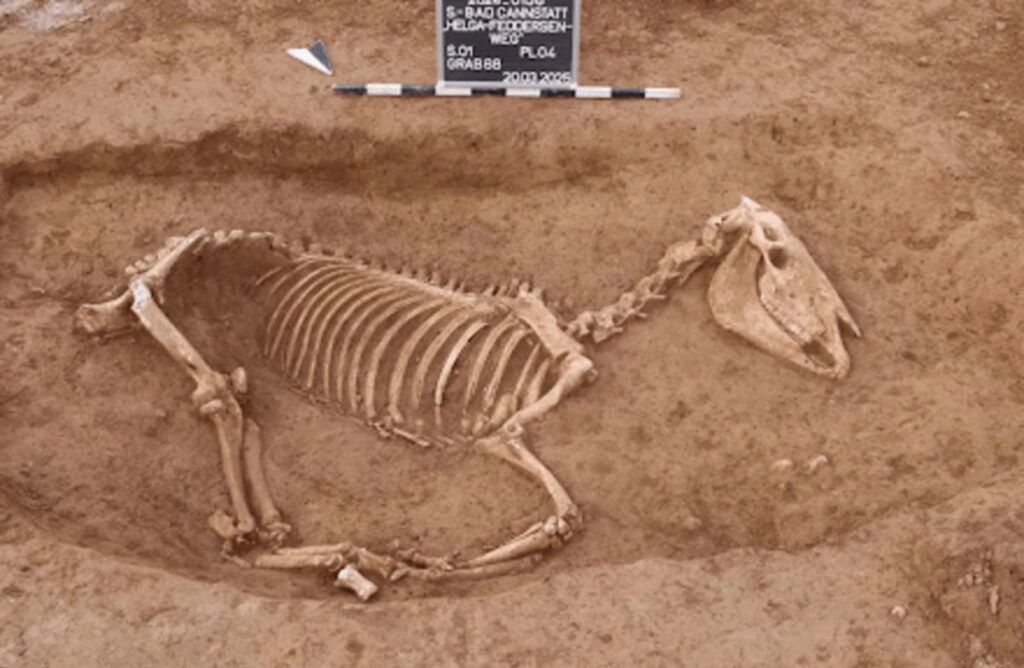
One of over 100 Roman horses unearthed in a mass cavalry burial site in Stuttgart, offering rare insights into Roman military logistics and human-animal bonds.Credit : Stuttgart Regional Council / ArchaeoBW
In what’s being called one of the biggest Roman horse burial sites ever discovered in southern Germany, archaeologists in Stuttgart have stumbled upon something pretty extraordinary: over 100 horse skeletons dating back nearly 2,000 years.
The site, located in the historic district of Bad Cannstatt, was uncovered during prep work for a new housing development. But instead of foundations and pipes, diggers found shallow graves filled with the remains of Roman cavalry horses — animals that once served a military unit stationed nearby in the 2nd century CE.
According to the State Office for Monument Preservation, these horses were part of an ‘Ala’ — a Roman cavalry unit of around 500 riders. They would have needed hundreds of horses on standby, constantly replacing those lost to injury, illness, or simple exhaustion.
Emotional Roman horse burial reveals rare soldier-animal bond
Most of the horses were buried hastily, which makes sense in a military context. But then came something different — a carefully positioned skeleton, its legs tucked neatly under its body. Next to it? Two ceramic jugs and a small oil lamp.
These kinds of grave goods are usually reserved for humans.
“To see that level of care taken with just one horse — it’s hard not to imagine the bond that must have existed between the animal and its rider,” said archaeologist Sarah Roth. “You can still feel the emotion in that moment, even 1,800 years later.”
Face-down Roman burial sparks mystery in Stuttgart dig
The dig also revealed something else: a human skeleton, lying face down, with no belongings or markers. It was found far from any known Roman cemetery. That odd placement has experts wondering if this man was a social outcast — or perhaps buried in disgrace. No one’s sure yet.
While the site had long been suspected to be an old ‘Schindanger’ — a dumping ground for dead animals — the new discoveries point to something much more layered and personal. These weren’t just discarded beasts of burden. At least in some cases, they were respected companions.
Roman horse bones offer fresh clues about ancient cavalry life in Stuttgart
The research team is now analysing the remains in detail: the age, size, health and origin of the horses. Were they bred locally? Imported from across the Empire? What did they eat? How were they treated?
Those questions matter — especially in a city like Stuttgart, whose name actually comes from the Old High German stuotgarten, meaning “mare’s garden.”
And so, what started as just another construction site has opened a window into a corner of Roman life that was, until now, largely hidden beneath our feet.
Stay tuned with Euro weekly news for more news from Germany






